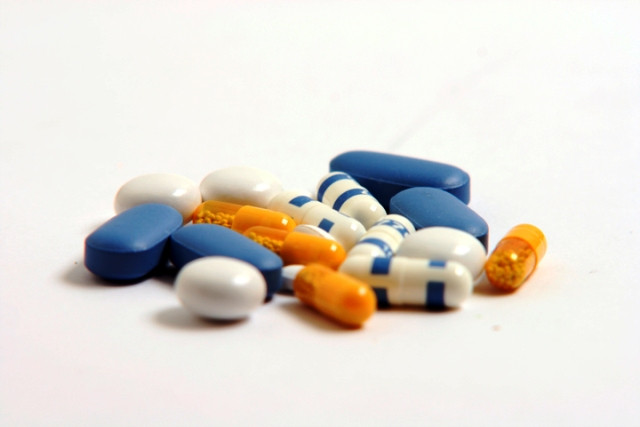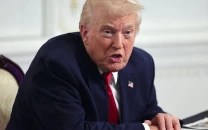New policy takes care of industry and consumers
Except for hardship cases, medicine prices will remain frozen for one and a half years

50%of the Consumer Price Index, is by how much prices of lower-priced drugs can be increased every year. STOCK IMAGE
The new drug policy, approved after hectic backdoor lobbying by pharmaceutical companies, has addressed most of the concerns of the industry besides shielding the image of government in the eyes of public.
The policy allows an immediate increase in prices of drugs in hardship cases while rates of other medicines will remain frozen for the next one and a half years. It calls for a reduction in prices of originator brands of drugs after four years except in cases where prices are lower than in India and Bangladesh. The policy was approved by the Economic Coordination Committee (ECC) last week.
“This is the first comprehensive drug policy that addresses the concerns of pharmaceutical companies in addition to taking care of the interests of consumers,” said Saira Afzal Tarrar, Minister of State for National Health Services, Regulations and Coordination while talking to The Express Tribune.

Sounding optimistic about the future of the industry, she said the policy was framed after active consultations with the key stakeholder. Now, she added, the international pharmaceutical companies would stay in Pakistan.
The country received the first appreciation from US Ambassador Richard Olson, who during a meeting with Finance Minister Ishaq Dar, highlighted the positive feedback to the new policy from the American pharma firms.
Under the policy, except for hardship cases, maximum retail prices of medicines will remain frozen at the approved level of October 31, 2013, to the end of June 2016.
Some favour
The government has tried to strike a balance while dealing with the originator brands of New Chemical Entities, although it seems that the industry has won some favour.
The prices of originator brands of the new entities will be reduced after four years or at the time of entry of at least three generic or bio-similar brands in the market, whichever was later, at the rate of 10% per annum for three consecutive years.
In the original policy, the 30% reduction was envisaged in a single stage after five years or at the time of entry of three generic or bio-similar brands, whichever was earlier.
The government has also allowed price increase for generic medicines. Prices of generics marketed at less than 85% of the reduced originator brand price can be increased except for any increase as explicitly allowed under the new drug policy.
According to another important decision, the maximum retail prices of the originator brands of drugs listed in the schedule will be reduced by 10% per annum for three consecutive years.

However, here again it has given benefits to the industry. The condition of reduction will not be applicable to the originator brands whose prices are not higher than average prices of the same brands in India and Bangladesh. In the original policy, the 30% reduction was in a single stage and prices were not linked to India and Bangladesh.
Price assessment
In order to examine the prices of drugs in comparable countries, the Information Medical Statistics Health, a global organisation which keeps data of drug prices, has been added as a verifying body in addition to the Pakistan High Commission and four big global chartered accountant firms.
The definition of lower-priced drugs has also been changed, which the government claimed was necessary to strike a balance between providing cost-effective medicines and encouraging domestic drug production.
The minimum price of a tablet, caplet, capsule and respule will be Rs3. Similarly, the minimum price of a millilitre of syrup, suspension and elixir will also be Rs3. The minimum price will be Rs6 for a sachet, Rs15 for an injection, Rs3 for a gram of cream, ointment and gel (non-sterile) subject to a maximum pack of 20 gram and Rs4 per gram of cream, ointment and gel (sterile), subject to a maximum pack of 20 gram.
The Ministry of National Health Services had suggested that the annual increase in lower-priced drugs should be equal to the rise in the Consumer Price Index in any financial year from July 2016 until the maximum retail price cap as prescribed in the policy was achieved.
The ministry argued that it was essential to fully link the prices with the CPI in order to encourage the production of drugs.
However, the ECC amended the policy, saying that prices of lower-priced drugs will be increased by 50% of the CPI every year.
Hardship cases
In order to take decisions on hardship cases, the policy board will constitute a committee, which will select such cases and fix a maximum limit for increase in prices of intravenous infusions.
Hardship cases of scheduled molecules will be processed on priority and decided on first-come-first-served basis but no later than nine months from the date of policy notification.
The ECC did not agree with the proposal of an annual increase in hardship cases and decided that they would be considered every three years.
The writer is a staff correspondent
Published in The Express Tribune, February 16th, 2015.
Like Business on Facebook, follow @TribuneBiz on Twitter to stay informed and join in the conversation.



















COMMENTS
Comments are moderated and generally will be posted if they are on-topic and not abusive.
For more information, please see our Comments FAQ